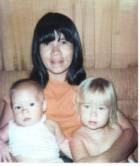
Ang pangálan kó ay si Michelle.
These words were written in English on a 11x3 inch card and pinned to my
chest when I flew from the Phippines to the United States because I could
not say them in English myself. My name is Michelle.
My mother is Filipina. She spoke Visayan, Ilocano, or Cebuano, three
Philippine dialects, with her friends and relatives, and me, for a while,
but only English with my father and our neighbors in the mobile home park.
I was the oldest of three girls and I was proud to be the only one born
in Manila, Philippines. My middle sister was born in Key West, Florida,
and my little sister would be born a year later in a nearby hospital in
Norwich, Connecticut. 
I was not a white child, although I did not realize that until I started school. I remember collecting the autumn leaves, mga dáhon, on the way to and from school each day. My mother would collect them and carefully place them in our English dictionary to dry. Years later, I enjoyed using the dictionary that rained with dried autumn leaves whenever I searched for a new word. I realize now that my mother, a new immigrant from the Philippines, was as fascinated with the colors as I was as a child. She grew up with tropical forests and palm trees, so the vibrant colors in the fall foliage must have been a new and spectacular sight for her. The colorful foliage also represented change, not just for me and my mother, but also for the small community in Connecticut. I started school in the early 1970s, just as a new wave of Asian immigrants was making their way into the United States. As a Philippine-American child in Connecticut, I stood out like the colorful fall leaves.
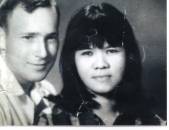 My
father was an Optical Man in the U.S. Navy. All of his immediate
relatives lived in Connecticut. During one visit to my grandparents’
house, Grandma decided not to make her traditional New England pot roast
and instead served rice and fish sticks prepared especially for our family.
The rice was dry and tasted like cardboard, and I had never seen square
pieces of fish before. My sisters and I knew enough to eat it just
to be polite, but I’m sure my Grandma noticed our discomfort including
our reaction to the white pickle sauce. At home, Mom’s rice, kanin,
was moist and slighty sticky. The steam that rose from freshly cooked
rice carried the light scent of jasmine. Mom’s fish looked just like
fish, isda--from head to tail and the only sauce we used was suka,
a palm vinegar, or patis, a strong smelling fish sauce. My
sister and I would fight for the gooey eyeballs and the crunchy tailfin.
My mom always kept the rest of the head for herself. We caught a
lot of the fish ourselves at my Grandparents’ cottage on a lake in northern
Connecticut. We would eat anything we caught--big or small.
My relatives only ate big fish, Bass, because they claimed everything else
was too small or too bony or too fishy. Even then they would cut
away the head, bones and tail before cooking it. All that would end
up on their plate was a pale, white square that didn’t even resemble a
fish. I never understood that because at home we sometimes ate fish
the size of my little finger, head to tail, dried in salt and crunchy and
fishy tasting. It seemed obvious to me that fish
My
father was an Optical Man in the U.S. Navy. All of his immediate
relatives lived in Connecticut. During one visit to my grandparents’
house, Grandma decided not to make her traditional New England pot roast
and instead served rice and fish sticks prepared especially for our family.
The rice was dry and tasted like cardboard, and I had never seen square
pieces of fish before. My sisters and I knew enough to eat it just
to be polite, but I’m sure my Grandma noticed our discomfort including
our reaction to the white pickle sauce. At home, Mom’s rice, kanin,
was moist and slighty sticky. The steam that rose from freshly cooked
rice carried the light scent of jasmine. Mom’s fish looked just like
fish, isda--from head to tail and the only sauce we used was suka,
a palm vinegar, or patis, a strong smelling fish sauce. My
sister and I would fight for the gooey eyeballs and the crunchy tailfin.
My mom always kept the rest of the head for herself. We caught a
lot of the fish ourselves at my Grandparents’ cottage on a lake in northern
Connecticut. We would eat anything we caught--big or small.
My relatives only ate big fish, Bass, because they claimed everything else
was too small or too bony or too fishy. Even then they would cut
away the head, bones and tail before cooking it. All that would end
up on their plate was a pale, white square that didn’t even resemble a
fish. I never understood that because at home we sometimes ate fish
the size of my little finger, head to tail, dried in salt and crunchy and
fishy tasting. It seemed obvious to me that fish 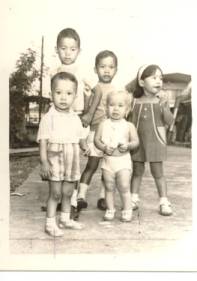 should
taste fishy. Ang kumain ay masarap. It is delicious.
should
taste fishy. Ang kumain ay masarap. It is delicious.
I knew we were different from our relatives, but I did not think that their idea that we were weird for eating so much fish was any different from my idea that they were weird for eating so many hot dogs. I discovered the real difference when I started school. My mom walked me to the bus stop on my first day of kindergarten in Baltic, Connecticut, in 1973. Other mothers were there with their children--ready to send them off to school with a lunchbox and kisses. I overheard them talking about the Chinese girl, but I didn’t see any Chinese girl waiting for the bus. When the bus arrived, my mom kissed me and sent me off with my sack lunch. Anák, mag pakabaítka. Child, be good. Once on the bus, an older girl pulled me next to her. She seemed like a grown up--and as the school year progressed, she accompanied me on most of the rides to and from school. I felt safe with her, but I still heard remarks from other kids about the Chinese girl. They would sing and make gestures, sort of like the “head, shoulders, knees and toes” song, except that what they sang was, “Chinese, Japanese, dirty knees, look at these!” and the gestures included making Chinese eyes with their fingers. That was when I realized that I was the Chinese girl.
I actually thought that was pretty funny. Chinese! Boy, these kids sure were dumb! I’m from the Philippines! I’m a Filipina, not Chinese! I never had to address the issue with the other kids because the issue never surfaced beyond the occasional remarks in the hallways or on the bus. Somehow I think I mixed in fairly well. I enjoyed playtime and painting, and I learned how to write. I learned to recite the Pledge of Allegiance and to sing, “God Bless America”.
I met Michelle in the Fall of 1973. She was walking to the bus stop with her mother, an Asian woman who looked like the dolls my dad brought back from China. Michelle’s light skin, hazel green eyes, and white-blonde hair sharply contrasted her mother’s olive skin, brown eyes, and jet-black hair. When they reached the bus stop, I heard the other kids making fun of them because they stood out in the crowd of white Americans. Michelle’s mother was giving her instructions in another language and prodded her to board the bus when it arrived.
Most of the kids on the bus lived in the trailer park and were Navy brats, like me. My dad was at sea at the time--somewhere in Asia; he sent me postcards from Japan and China, and occasionally brought home dolls for me. Michelle was just a little China doll to me--and I became very protective of her. When she came on the bus, I offered her a seat next to me and I taught her songs and made sure she got off the bus at the elementary school.
Michelle spoke with an accent--it was strange how she was so different yet so like me at the same time. I was surprised to see how cruel the other kids could be to her. They were probably just as mean to each other at times, but calling names like “stupid” or “four-eyes” didn’t seem to have the same impact as pointing out racial differences. Yet in a way, I might have dismissed her too, because she was really just a novelty to me. Eventually, I became distracted with boys and sat with friends my age. The following year I started high school and I didn’t see Michelle anymore.
I may have been the first child of Asian descent at the school, as I don’t remember ever having other Asian playmates. Today, there are so many full-blooded Asians that have migrated to the United States, that Americans have become familiar with their presence. As a result, my predominantly white appearance has shifted me from the Asian group to the White group. In a sense, I feel I grew up in a permanent Fall. The demographics have changed constantly since the 1970s, continually displacing me from either ethnic group.
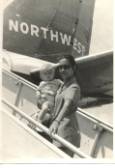 My
mother and father moved to the United States two years before I did.
I stayed in the Philippines with my aunt and uncle, whom I called “Mamma”
Nellie and “Pappa” Alex, until my parents completed the paperwork for me
to accompany them to the United States. My mom and dad used to tell
me how fascinated the airline stewardesses were with me on the airplane,
which took me from the Philippines to Japan, then to Seattle, Washington,
and finally to Key West, Florida. Yet, the stewardesses and passengers
were just as fascinated with my Asian self as Filipinos were with my White
self. When my Mamma Nellie used to take me to the markets in the
Philippines, people would come up to me and touch my blonde hair and light
skin. A Filipino division of Johnson and Johnson had even proposed
to use me in their advertising.
My
mother and father moved to the United States two years before I did.
I stayed in the Philippines with my aunt and uncle, whom I called “Mamma”
Nellie and “Pappa” Alex, until my parents completed the paperwork for me
to accompany them to the United States. My mom and dad used to tell
me how fascinated the airline stewardesses were with me on the airplane,
which took me from the Philippines to Japan, then to Seattle, Washington,
and finally to Key West, Florida. Yet, the stewardesses and passengers
were just as fascinated with my Asian self as Filipinos were with my White
self. When my Mamma Nellie used to take me to the markets in the
Philippines, people would come up to me and touch my blonde hair and light
skin. A Filipino division of Johnson and Johnson had even proposed
to use me in their advertising.
We moved to Connecticut before I started kindergarten. I learned in this class that my arrival in Connecticut coincided with the influx of Asian immigrants to the United States in the 1970s. So, for many White Americans, I was their first exposure to the Asian Other. The problem is that we probably tend to fear the things we don’t know or understand, but express that fear as hatred or with mean and vulgar statements. I was lucky enough to be near a military installation surrounded by other Americans who were more accepting of my mixed family.
I have always felt somewhat lost in society. I cherish
my Filipino heritage, but when I try to mix in with Filipinos (without
the help of my mother), I feel somewhat distanced by the group. Conversely,
while not rejected by my White counterparts, my kinship with Whites only
runs as far as my father’s heritage contributed to my upbringing.
My mother stayed home to raise the children, so I grew up with as much
Philippine tradition as she could pass on. We learned traditional
Philippine dances, ate Philippine foods, and even wore Philippine costumes
to certain events. 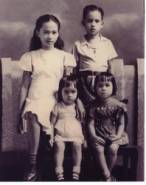
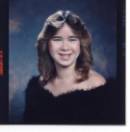 I’ll
admit that the only “society” where I really felt comfortable was when
we were stationed in Hawaii, which is not as much a melting pot as it is
a tossed salad of Asian and American cultures. People like me even
had our own “ethnicity” in Hawaii. We were “hapa” or mixed, just
like everyone else, who was some combination of Hawaiian, Samoan, Portuguese,
Japanese, Chinese, Korean, Philippine, and even White.
I’ll
admit that the only “society” where I really felt comfortable was when
we were stationed in Hawaii, which is not as much a melting pot as it is
a tossed salad of Asian and American cultures. People like me even
had our own “ethnicity” in Hawaii. We were “hapa” or mixed, just
like everyone else, who was some combination of Hawaiian, Samoan, Portuguese,
Japanese, Chinese, Korean, Philippine, and even White.
I understand now that the influx of Asians to the United States in the 1970s is also what pushed me out of Asian ethnicity and into White ethnicity. In some sense, I was the introduction of the changes to come, an Asian-American girl who preceded the arrival of full-blooded Asians to American shores.
Return to Personal Memory Ethnographies
homepage